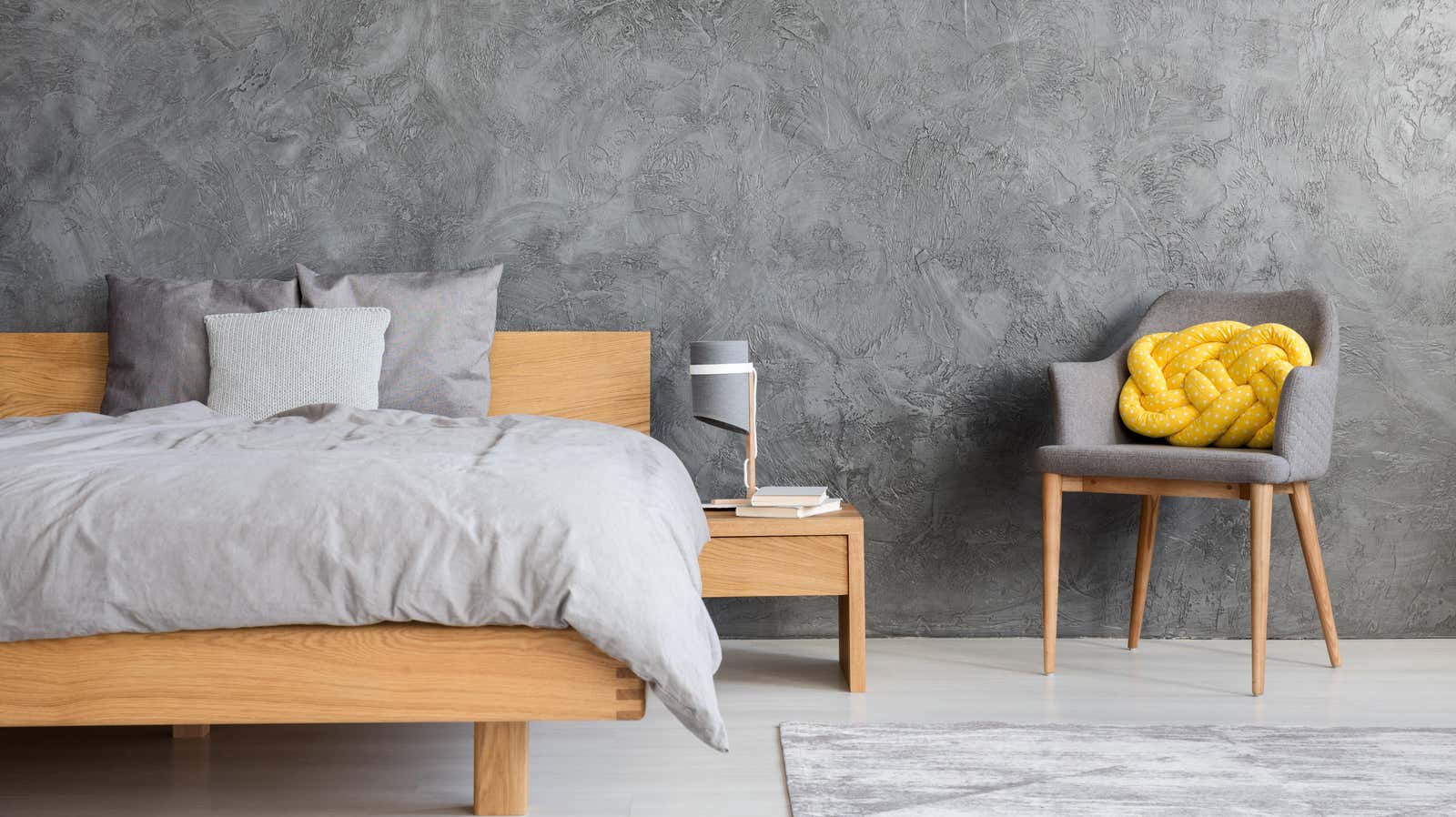How to Make a Textured Accent Wall With Limewash

Lime treatment can help you achieve an aged textured look on a variety of surfaces, in particular it can be a great way to accent one wall to create the focal point of any room. This method was originally used on brick and masonry, so it works best on porous surfaces, but with the variety of paints available today, it is also gaining momentum for interior and furniture treatments.
Before you begin, keep in mind that lime cannot be washed off with water, and since the overall effect depends on the texture, this painting method is not ideal for countertops or other surfaces that need to be smooth. But this expensive looking finish can be done on your own on the right surface with some materials and preparation.
What you need to make limestone:
- Two buckets of 5 liters
- Mixing attachment and drill or whisk
- Wide brush for coloring
- Mineral based acrylic primer
- Slaked lime
- alum salt
- natural earth pigment
- Buckets or mixing bowls
- Roller and roller post
- Paint brush
- masking tape
You will also need gloves, goggles and a mask.
Application of primer, lime putty and primer coat
First, you need to prepare the surface of the wall by applying a primer. Tape off any surfaces you don’t want to paint and apply a mineral-based acrylic primer to the wall surface using a roller. Use the brush to paint over areas that the roller cannot easily cover. Allow the primer to dry completely before applying the first coat of lime.
Preparing the lime putty for your next step will make the rest of the process easier as it dissolves more evenly into your lime wash mix. To make putty, fill a five-gallon bucket about a third full of water. Then use a whisk or other mixing tool to mix the slaked lime powder until it is the consistency of glaze or gypsum putty. Be sure to wear goggles, a mask, and gloves for this part.
Then, using a ratio of one part alum salt, one part natural mineral pigment, ten parts lime putty, and 40 parts water, make a primer and patina. It should be a thinner mixture than the wash that will be applied next. To avoid a sandy mixture, dissolve the alum salt in a small amount of boiling water before adding it to the mixture. Be sure to wear protective gear for this part as well. Apply the primer with a wide criss-cross brush to get a good base. Be sure to stir so that the mixture does not separate. The color may seem very light, but over time it will become more saturated.
Applying a layer of fill and a layer of patina
Once your primer is dry, mix the wash coat in the ratio of one part alum salt, one part natural mineral pigment, ten parts lime putty, and 20 parts water. Be sure to dissolve the alum salt in the boiling water before adding it so you don’t get a grainy paint texture. The consistency of this layer will be noticeably thicker than the first one, and it will add more color to your surface. Now apply a fill layer to the surface in the form of hatching, noting that this layer will have the most visible texture. When it dries, it will appear lighter than when wet, so if you want a more intense color, you can add another layer of wash.
Once your coat is dry and you’re happy with the color, the last step is to add a layer of patina. Using the same mixture as the primer, apply the patina mixture with a wide cross-hatching paint brush. Once this layer is dry, your lime is finished. Since you cannot wash this surface with water, you can renew it by applying a new layer of lime if necessary.